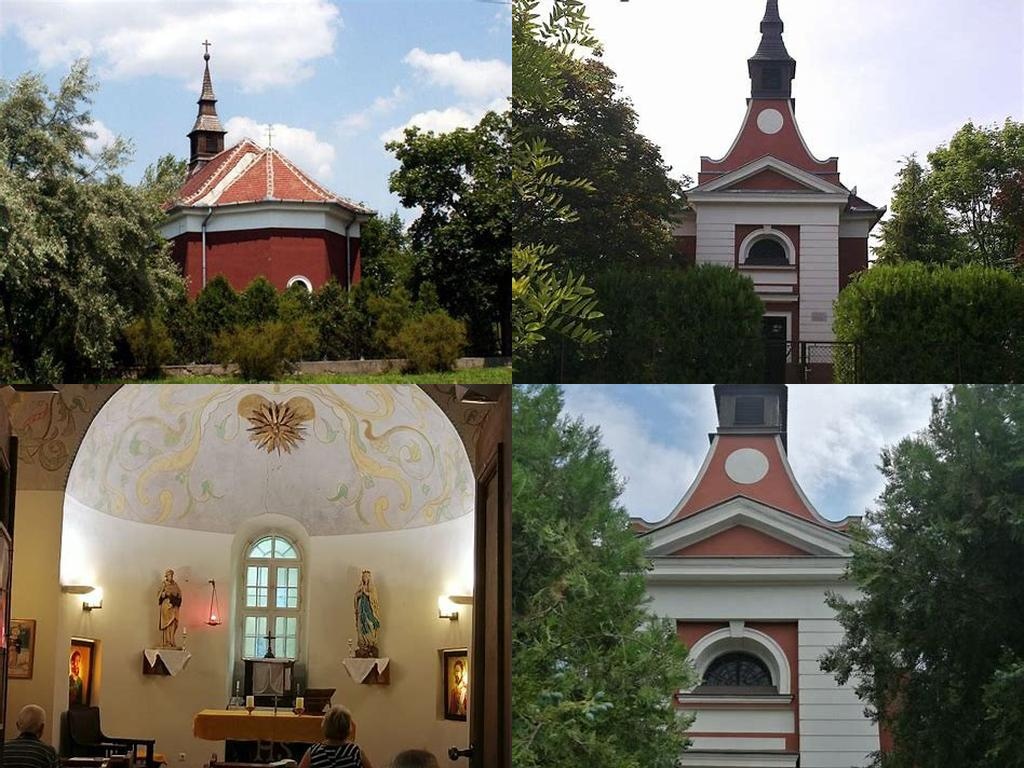
Pestszentlőrinci Grassalkovich kápolna quietly stands as one of those rare, heartwarming surprises waiting for anyone curious enough to wander a little further south from Budapest’s best-known boulevards. Tucked away in the verdant, suburban calm of Pestszentlőrinc, this small but captivating chapel invites travelers with a presence so gentle and a history so layered that it becomes impossible not to pause and take it all in.
Venturing up to the chapel, you’ll notice the subtle elegance of its Baroque facade, a reminder of the vision of its long-gone patron, Antal Grassalkovich I. Built in 1740, the Grassalkovich Chapel isn’t just old—it’s a living testament to the shift in Budapest’s outer districts from wild, sparsely populated lands into cultured neighborhoods adorned with art, faith, and a sense of community. Back then, the area wasn’t yet part of the Hungarian capital, but rather the estate lands managed by the illustrious Grassalkovich family, whose name is still whispered with respect in the city’s historical corners. Antal, one of Hungary’s most powerful aristocrats, commissioned this chapel to serve both as a spiritual haven for estate workers and a gentle statement of faith in the midst of untamed fields.
Step inside today and you’re met by something almost paradoxical: intimacy and grandeur, both contained within walls that have watched centuries roll by. The interior is bathed in soft daylight filtered through wide windows, and your gaze will likely be drawn instantly to the gleaming altar—its gentle curves and modest ornamentation a contrast to the grandiose churches of Budapest’s city center. It’s the kind of space where silence feels natural and time well-spent. If you listen closely, you can just imagine the whispered prayers of farmhands, noble families, and perhaps Antal Grassalkovich himself, all seeking solace under this same roof.
What makes the chapel endlessly fascinating for historically minded wanderers is how it reflects both personal and national stories. After the original construction, the chapel weathered multiple transformations. During the tumultuous centuries that followed, including wars, occupations, and major demographic shifts, the chapel stood its ground—even when other buildings did not. In the late 19th century, as Pestszentlőrinc slowly merged into the metropolis growing across the Danube, local citizens rallied to restore this modest Baroque gem. It’s this sense of resilience, and community pride, that seems to linger the strongest.
Wander the little churchyard, shaded by ancient trees, and life feels slower. Seasons here circle with their own rhythm; Easter finds the chapel buzzing with local festivity, while autumn blankets the grounds in golden leaves. You’re only a short walk from the busy roads, but the air is thick with the scent of grass and pine, a quality that’s rare in Budapest’s bustle. It’s not just a chapel—it’s proof that urbanity and tranquility can coexist.
Perhaps the most delightful part of visiting the Grassalkovich Chapel in Pestszentlőrinc is how personal the experience feels. Unlike many sites that draw long lines and photo-snapping crowds, here you’ll likely meet only a handful of locals, who might share stories of weddings, christenings, or even the legends that have grown around Antal Grassalkovich himself. They’ll tell you about the time-honored processions that still take place every summer, or how the chapel has seen three centuries of Budapest’s transformation, yet maintains the same hopeful spirit it had in 1740.
So if your travels ever bring you to Budapest’s quieter southern edges, allow yourself a detour to the Grassalkovich Chapel. Whether you’re drawn here by reverence, curiosity, or simply the promise of a picturesque picnic under old trees, this historic sanctuary will quietly reward you with a sense of connection—not just to Hungarian heritage, but to the many lives, loves, and quiet hopes that have passed gently through its doors.





